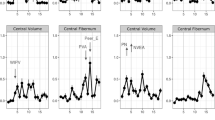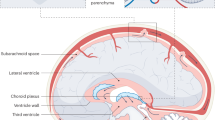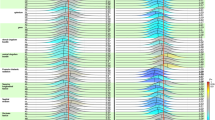Abstract
TAYLOR and Ounsted1,2 have proposed a model to account for the age of onset of developmental disorders and their relative incidence between the two sexes. They propose that there is a period in the maturational continuum during which the child is particularly vulnerable to a particular disorder. Males develop more slowly than females and they should therefore reach this “dangerous state” later, and take longer to pass through it. It is therefore predicted for any developmental disorder, that males should show a later age of onset and a higher incidence than females2; but that females are more likely to suffer seriously than males1, (although this does not follow directly from the model). Evidence relevant to these predictions is reported here for congenital hydrocephalus.
This is a preview of subscription content, access via your institution
Access options
Subscribe to this journal
Receive 51 print issues and online access
$199.00 per year
only $3.90 per issue
Buy this article
- Purchase on SpringerLink
- Instant access to full article PDF
Prices may be subject to local taxes which are calculated during checkout
Similar content being viewed by others
References
Taylor, D. C., Lancet, ii, 140 (1969).
Taylor, D. C., and Ounsted, C., in Gender Differences: Their Ontogeny and Significance (edit. by Ounsted, C., and Taylor, D. C.), (Churchill Livingstone, Edinburgh, 1972).
Laurence, K. M., and Coates, S., Archs Dis. Childh., 37, 345 (1962).
Author information
Authors and Affiliations
Rights and permissions
About this article
Cite this article
RICHARDSON, J. Differential rates of cerebral maturation between sexes. Nature 254, 140 (1975). https://doi.org/10.1038/254140a0
Received:
Issue date:
DOI: https://doi.org/10.1038/254140a0



